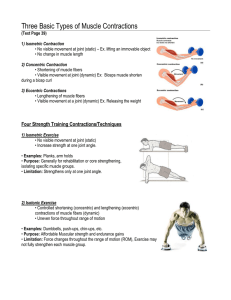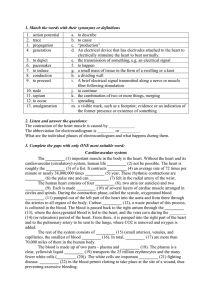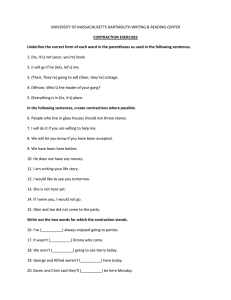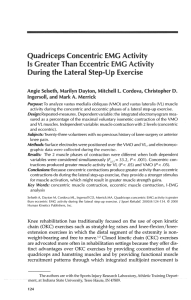Muscle Contractions
advertisement
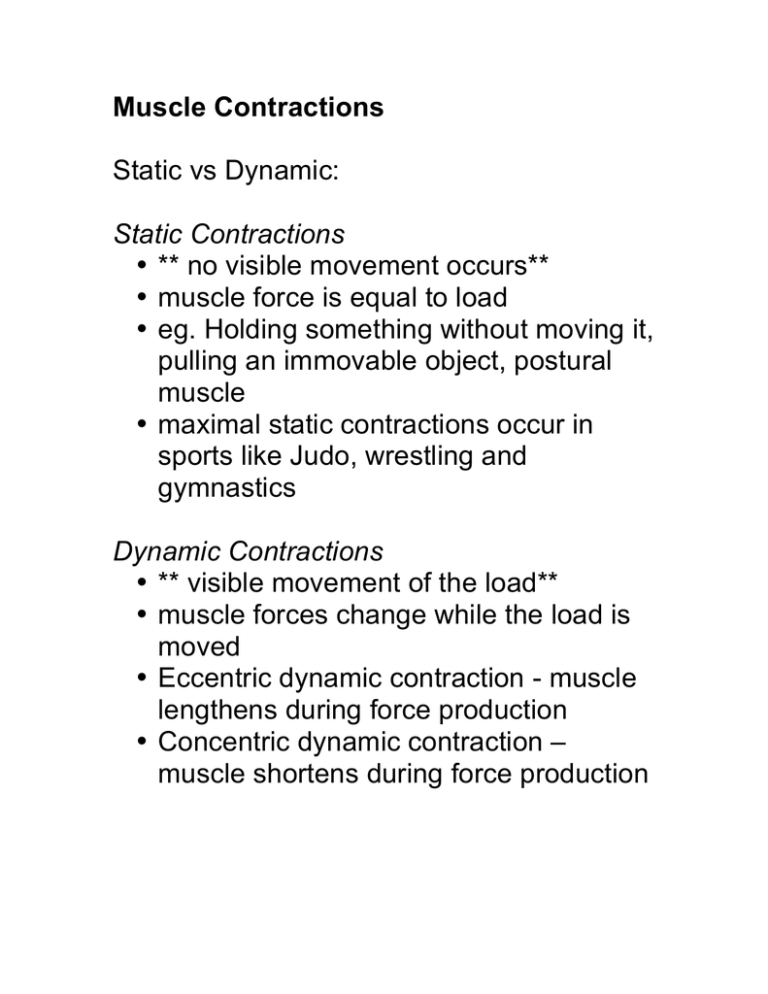
Muscle Contractions Static vs Dynamic: Static Contractions • ** no visible movement occurs** • muscle force is equal to load • eg. Holding something without moving it, pulling an immovable object, postural muscle • maximal static contractions occur in sports like Judo, wrestling and gymnastics Dynamic Contractions • ** visible movement of the load** • muscle forces change while the load is moved • Eccentric dynamic contraction - muscle lengthens during force production • Concentric dynamic contraction – muscle shortens during force production Types of Strength Training Contractions 1. Isometric (Static) • No visible movement of joint • Increased strength at one joint angle • Examples: planks, arm holds • Purpose: rehab or core strength • Limitation: strengthens at only one joint angle 2. Isotonic (Dynamic) • Controlled shortening or lengthening of muscle fibres • Uneven force throughout ROM • Examples: dumbbells, push-ups • Purpose: affordable muscular strength and endurance gains • Limitation: force changes throughout ROM 3. Isokinetic • Muscular contraction at a constant speed (dynamic) • Force (max resistance) is constant throughout the range of motion (ROM) • Maximal strengthening occurs at all joint angles • Examples: Cybex machine • Purpose: rehab and research • Limitation: very expensive 4. Plyometric • Combines a rapid eccentric contraction followed by a quick concentric contraction done repeatedly • The reflex causes a greater muscle contraction • Examples: jump squats, jump lunges • Purpose: increased strength gains, fast twitch fibre training, increase foot speed, increased agility • Limitation: not for beginners, increased risk of injury due to high forces
